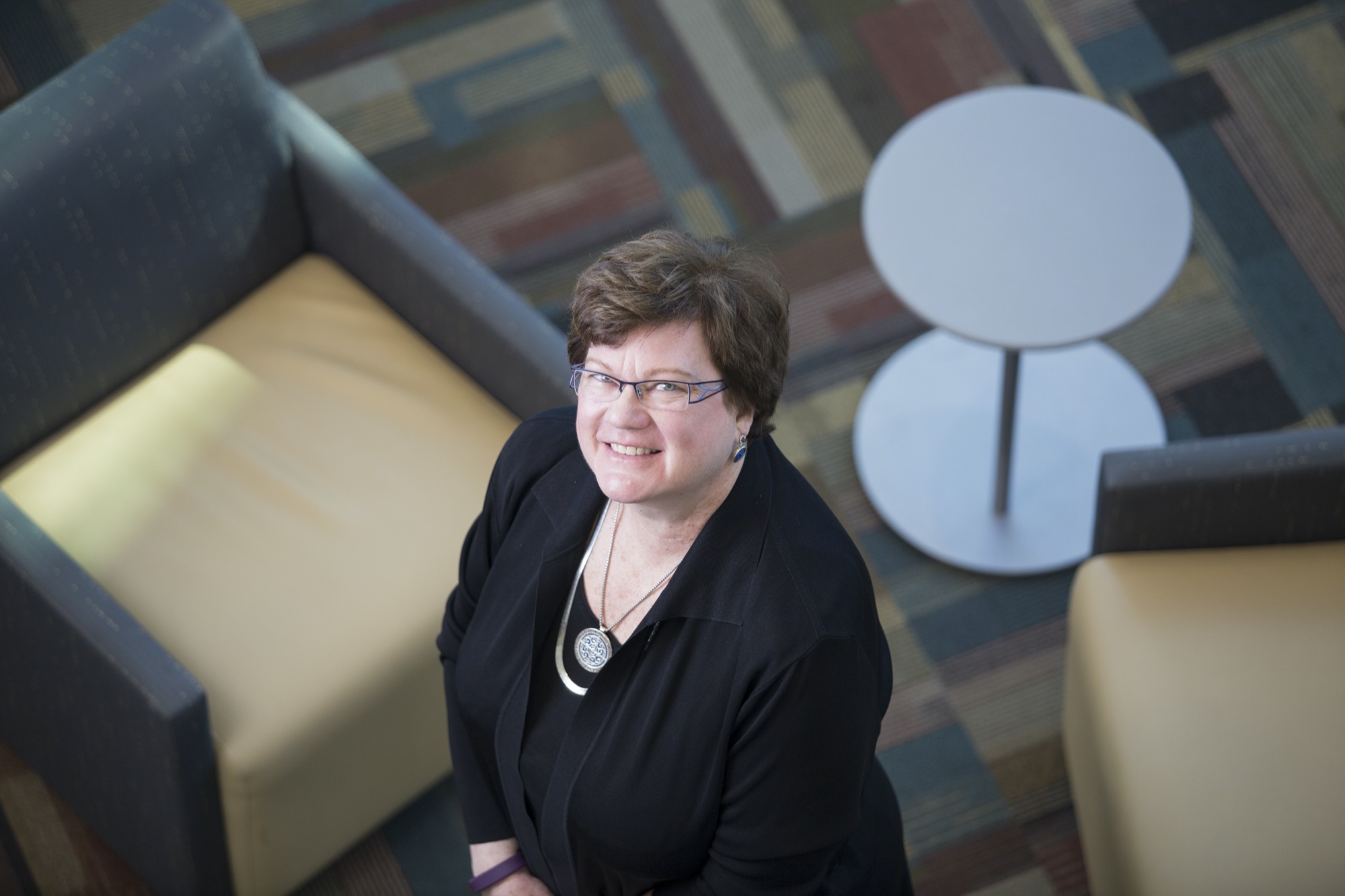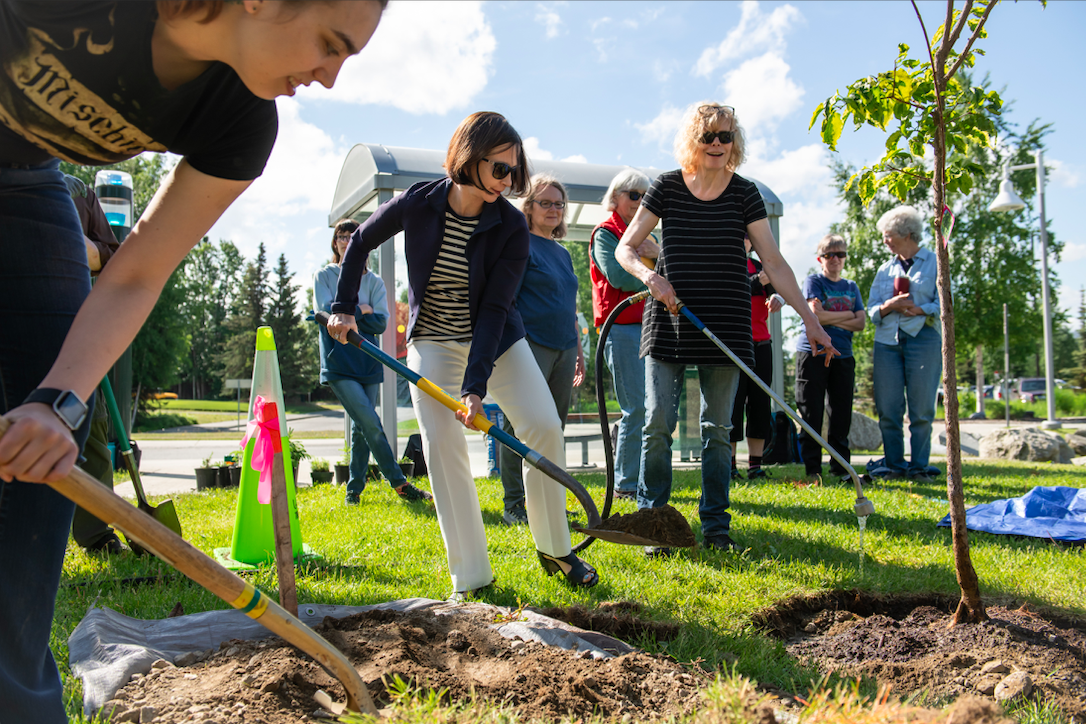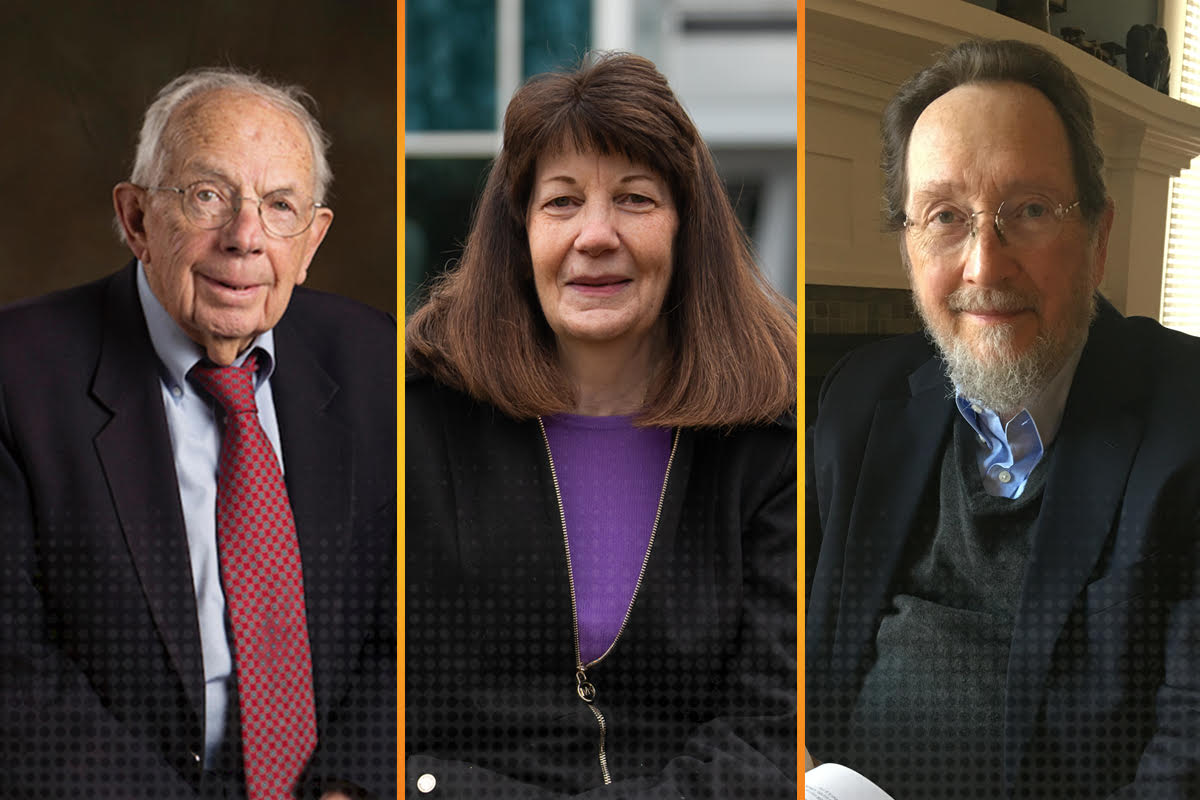From Hewlett-Packard to UAA
by Joe Selmont |

Associate Professor LuAnn Piccard believes in the power of the journey. Like any good project manager, she understands that life isn’t a straight line that leads from point A to point B. No flowchart, after all, can account for every possible outcome. And the journey that landed Piccard as chair of the Project Management Department at the UAA College of Engineering was chock-full of the unexpected.
After graduating from Anchorage’s East High School, Piccard attended Stanford University with the expectation she would eventually become a medical doctor. She had a future all mapped out, but everything changed during her sophomore year after a volunteer experience at a clinic for stroke survivors. Though she enjoyed working with patients, Piccard found that designing products that contributed to their rehabilitation was even more inspirational. At this time, she also realized that she possessed an instinct for design and creative problem solving.
A fellow student encouraged Piccard to speak with an engineering advisor, a piece of advice that upended all her careful planning. At the time, she knew nothing about engineering. Although she excelled in STEM courses in high school, girls weren’t encouraged to pursue engineering as a career.
“In fact,” she said, “as embarrassing as this is, I thought engineering just had to do with trains.” But she quickly recognized that the field represents a convergence of things she loves: the multifaceted needs, interests and desires of regular people and the functional use of technology to solve problems.
“That’s what inspired me about becoming an engineer,” said Piccard. “All of a sudden all of those things came together in that realm of possibility. I could design things that change people’s lives—that are useful, that are beautiful, that are meaningful. I found my home. But it wasn’t because that’s what I knew I wanted to do. It was because I was really doing something else and it led me there.”
Useful, beautiful and meaningful
While catching up on engineering classes, Piccard had the opportunity to work part time at the Veterans Administration Rehabilitation Engineering Research and Development Center in Palo Alto. Eventually, her boss gave her an open-ended project to design something—anything—that could help people with mobility issues. Understanding that rehabilitation is a multi-dimensional process involving physical, mental and spiritual recovery, Piccard had a lot of directions in which she could take the project.
Then something clicked. Piccard designed a video game controller that could be shoulder-operated by people with spinal cord injuries.
“By moving your shoulder up and down, it fired a little missile. And forward and backward moved it left-right on the screen,” Piccard said. “This was for Space Invaders, a real state-of-the-art game back then.” The controller could also be adjusted by therapists to encourage people to slowly, over time, extend their range of motion.
“Plus, two people could compete against each other,” said Piccard. “That was the real magic in the end. Because I’m the worst video game player ever, they would beat me every time. This showed them that, with a little bit of adaptation, they could be equal to or better than somebody who didn’t have the same perceived limitations.”
A little bit of adaptation
This creative device earned Piccard a prestigious award from the American Society of Mechanical Engineers, which helped her get a great job right out of college at the multinational company Hewlett-Packard (otherwise known as HP). Her first project was designing fiber optic transmitters and receivers — not exactly the most creative work — and she didn’t know if she was up to the task.
“I was really kind of intimidated at first,” she said. “I was thinking: What value can I add here? Some of the smartest people in the world work for this company. I felt different. I didn’t see myself as being the classic engineer.”
Piccard brought these concerns to her boss and when she expressed to him that she felt different, he responded with a shrug, saying, “Well, why do you think we hired you?” This little comment completely shifted Piccard’s thinking about herself, and she adapted accordingly.
Over the course of 20 years, that differentness helped Piccard rise through the ranks of HP. She served in many roles, bringing a creative and person-oriented perspective to each one. Her final position with HP/Agilent was vice president of the Communications Test Equipment Business Unit, running a global part of the company that did over half a billion dollars in business annually.
From the onset of her career as an engineer through executive leadership positions, she excelled at turning ideas into reality and thrived on possibilities and transformative change. In every role, Piccard was required to initiate, plan and execute big projects that involved lots of teamwork, strategizing and outcome delivery.
Piccard said, “It was always about seeing into the ‘white space,’ identifying what you’re trying to accomplish, mobilizing people to get things done and then delivering on those results to serve the needs of customers.”
In fact, it was in these very jobs that Piccard discovered her passion for project management. Or, rather, she discovered that two of her passions — creative problem solving and focusing on the human element — overlapped nicely with this professional field.
Unexpected transitions
Piccard may have stayed in the technology sector for much longer, if not for the birth of her daughter Sarah. At that point, her job involved traveling around the world, racking up millions of flyer miles on different airlines, and Piccard couldn’t see how that lifestyle could mesh with the demands and the joys of parenthood. Unsure of what to do next, but possessed by the knowledge that Alaska was home, Piccard returned to her roots.
Then fate intervened. The UAA College of Engineering — then called the School of Engineering — was going through a growth spurt, and the nascent project management program within the Engineering, Science and Project Management Department needed additional leadership. Before she knew it, Piccard was using her vast wealth of experience to teach and mentor the next generation of project managers.
“I wanted to use what I have to change people’s lives in a meaningful way,” said Piccard. “That’s what inspired me.”
Not the journey’s end, but another beginning
Since joining the faculty in the CoEng in 2006, Piccard has gone on to inspire many students. She said, “I love teaching. I love working with students. I love to see them grow in their own capability in the same way that I grew throughout my career.” And she has witnessed many of them achieve great success.
Just last year, two of her students in the master of science in project management program received highly competitive awards from the Project Management Institute (PMI). One for community engagement and the other for an academic paper advancing the body of knowledge for engineering and construction projects. To put this in perspective, each year there are only four award recipients from out of the 1.8 million worldwide members and credential holders.
In addition to her emphasis on student success, Piccard served as the chair of the PM-Global Accreditation Center and she currently serves on PMI’s Board of Directors as one of 12 directors elected by the global PMI membership. In this role, she helps guide the organization and advance the profession as it enables individuals and organizations to make ideas a reality and lead transformative change. Piccard is proud of UAA’s leadership position among project management academic programs globally and, given the unique challenges in the Arctic, that the world recognizes Alaska’s project managers for their contributions to the profession.
What makes the difference? How are Piccard’s students able to compete at such a high level?
“At UAA, you’re not being taught by a TA,” Piccard said. “At UAA, you’re being taught by somebody who’s an expert in their field, with a class size of 20 to 30 people, not a lecture hall with 500. I’m at UAA because I want to be here, because I want to teach.”
 "From Hewlett-Packard to UAA" is licensed under a Creative Commons Attribution-NonCommercial 4.0 International License.
"From Hewlett-Packard to UAA" is licensed under a Creative Commons Attribution-NonCommercial 4.0 International License.














